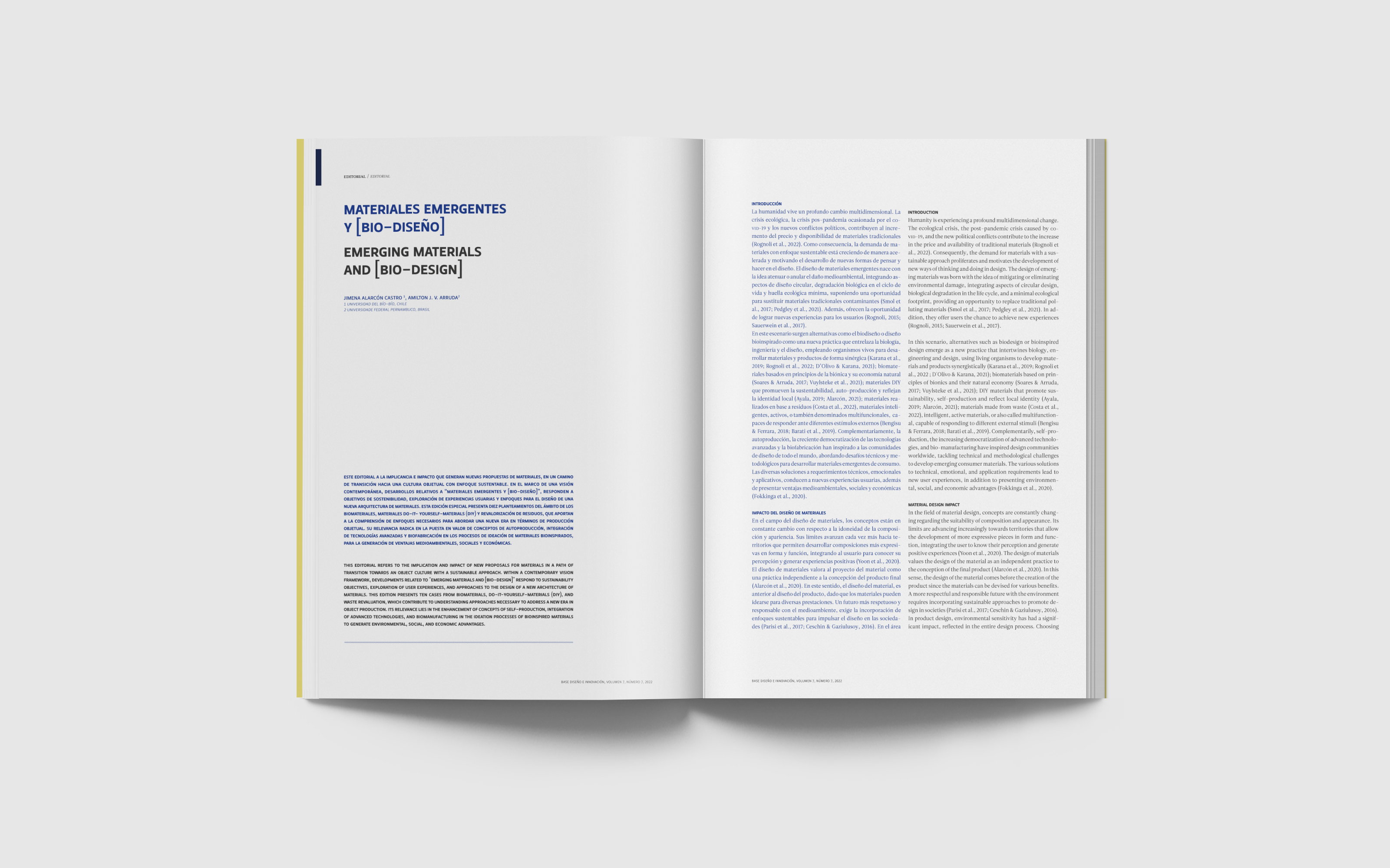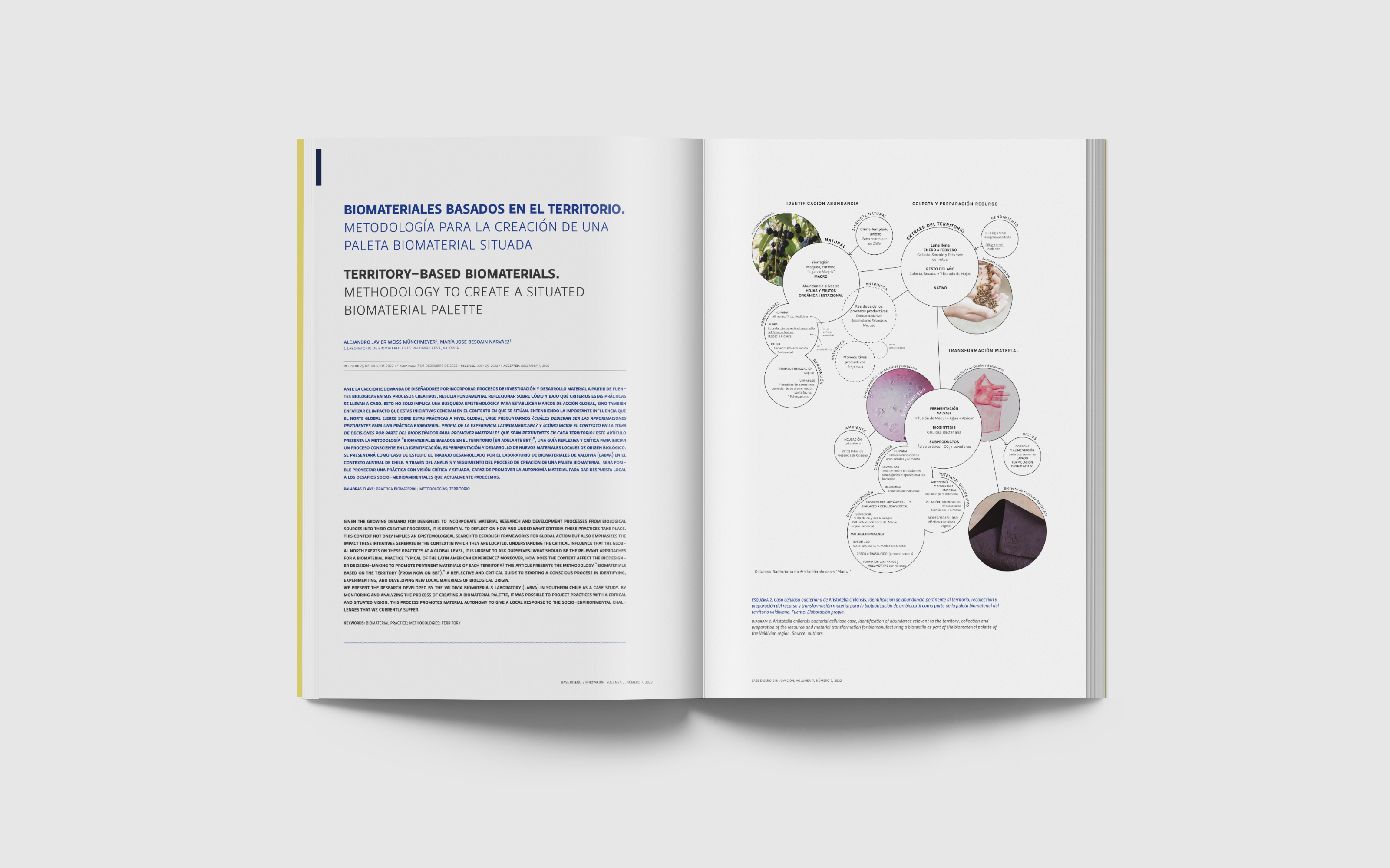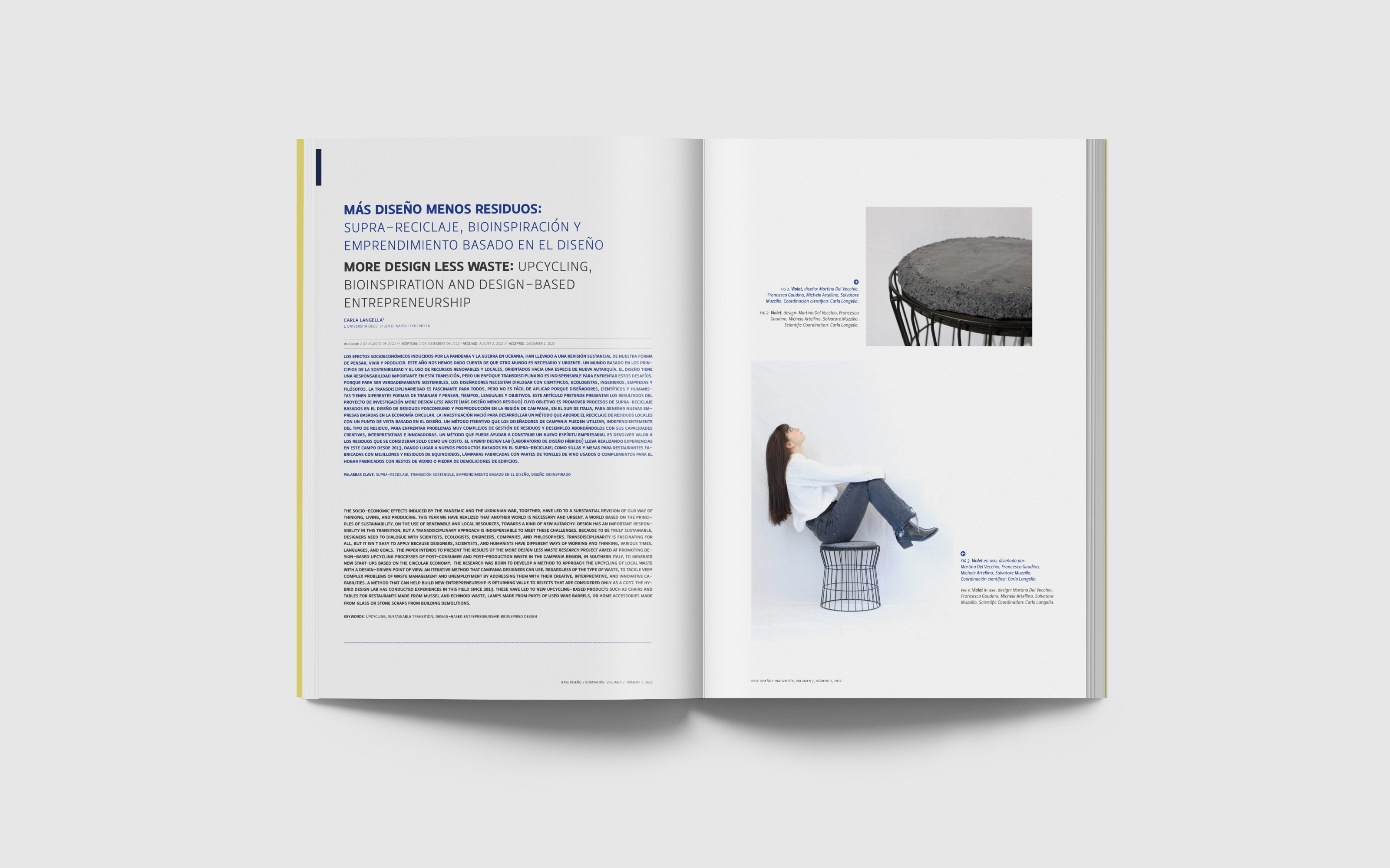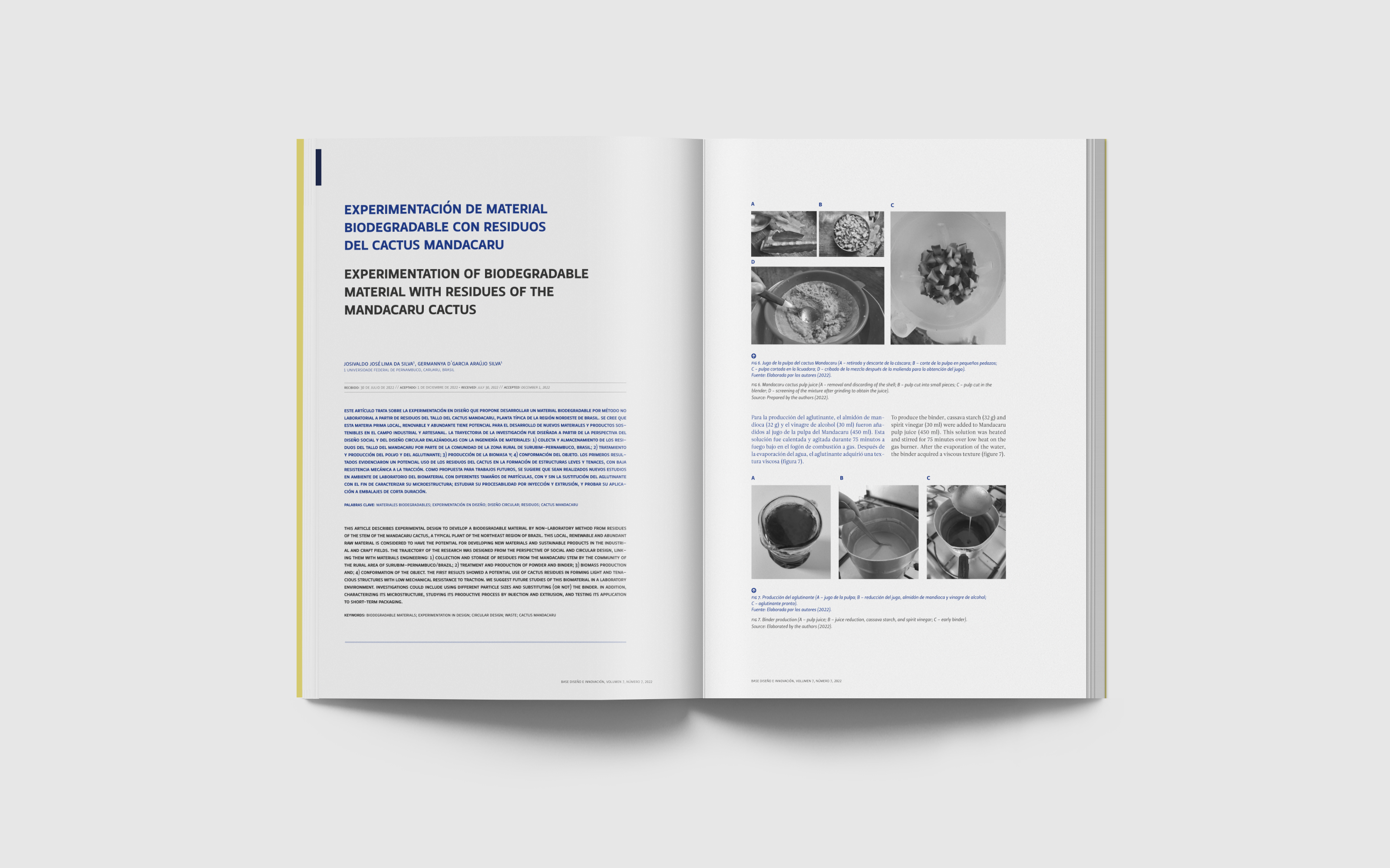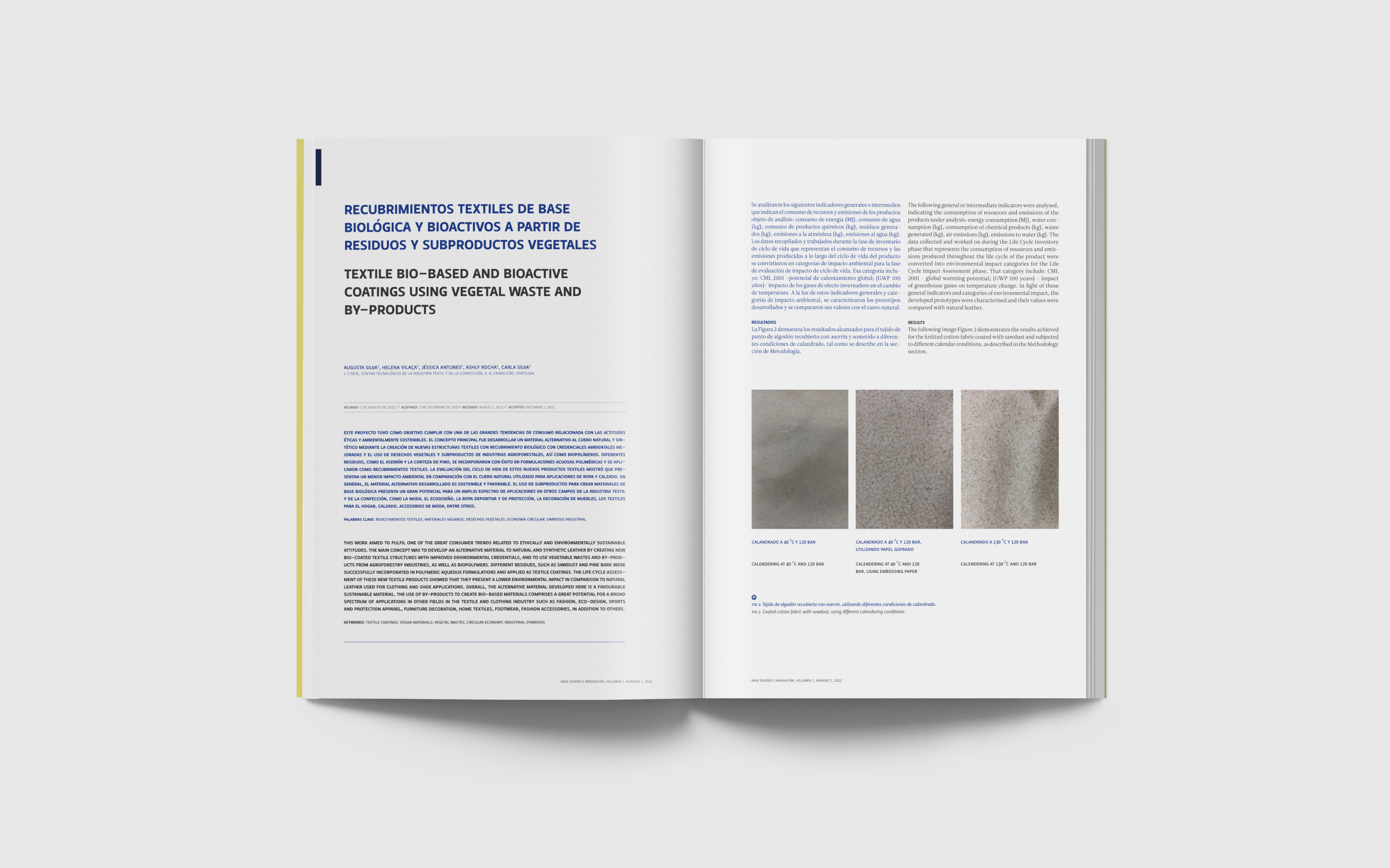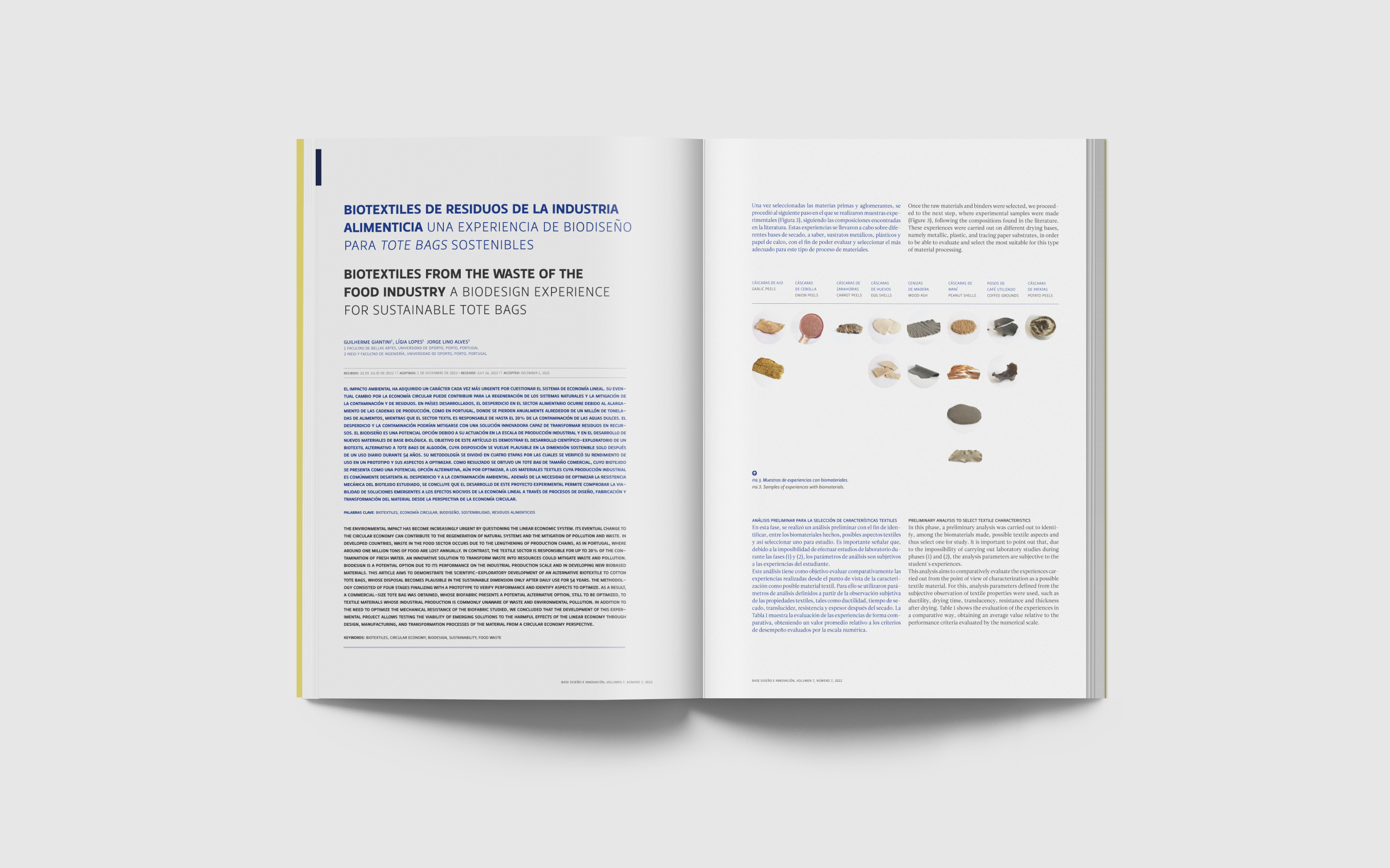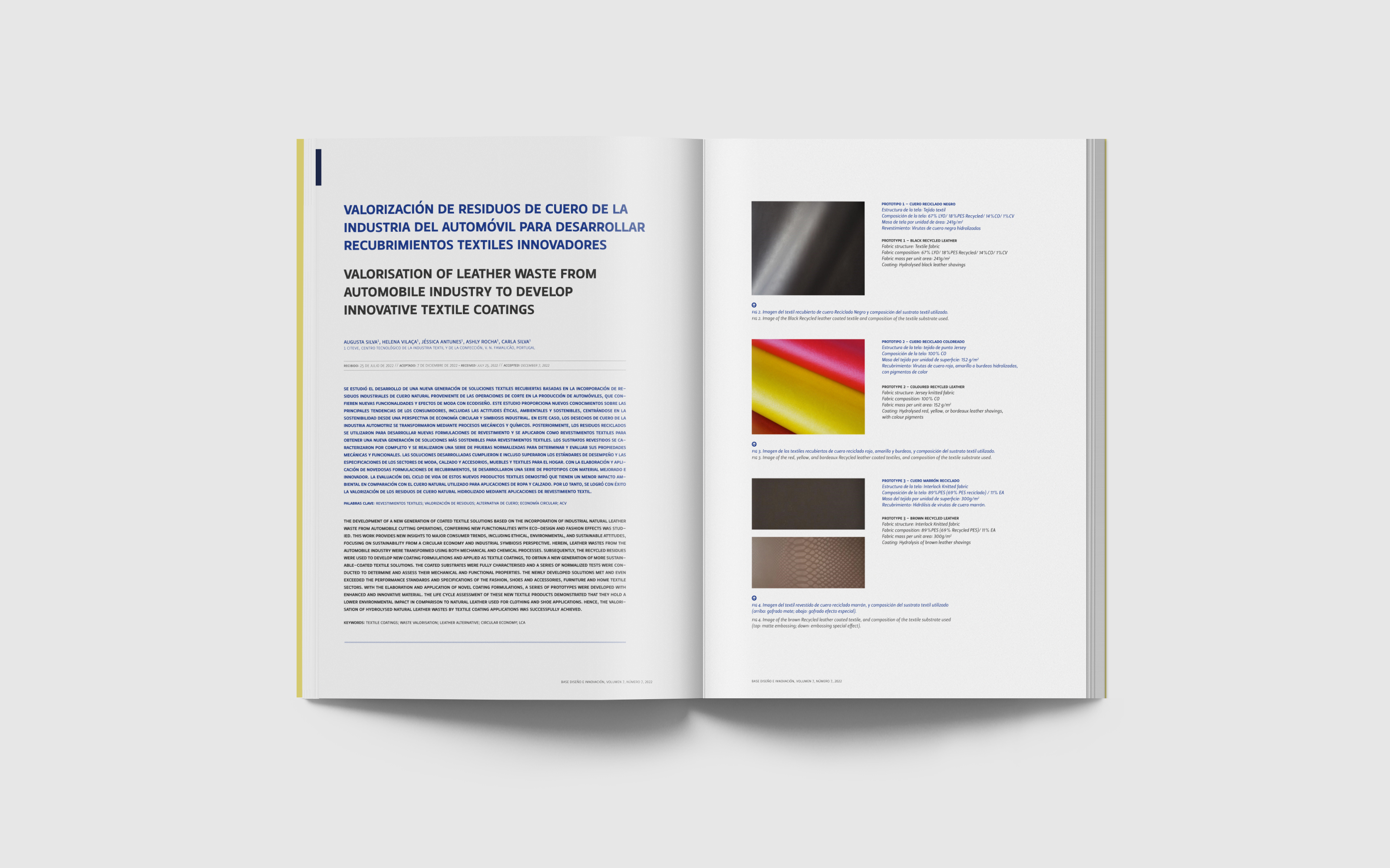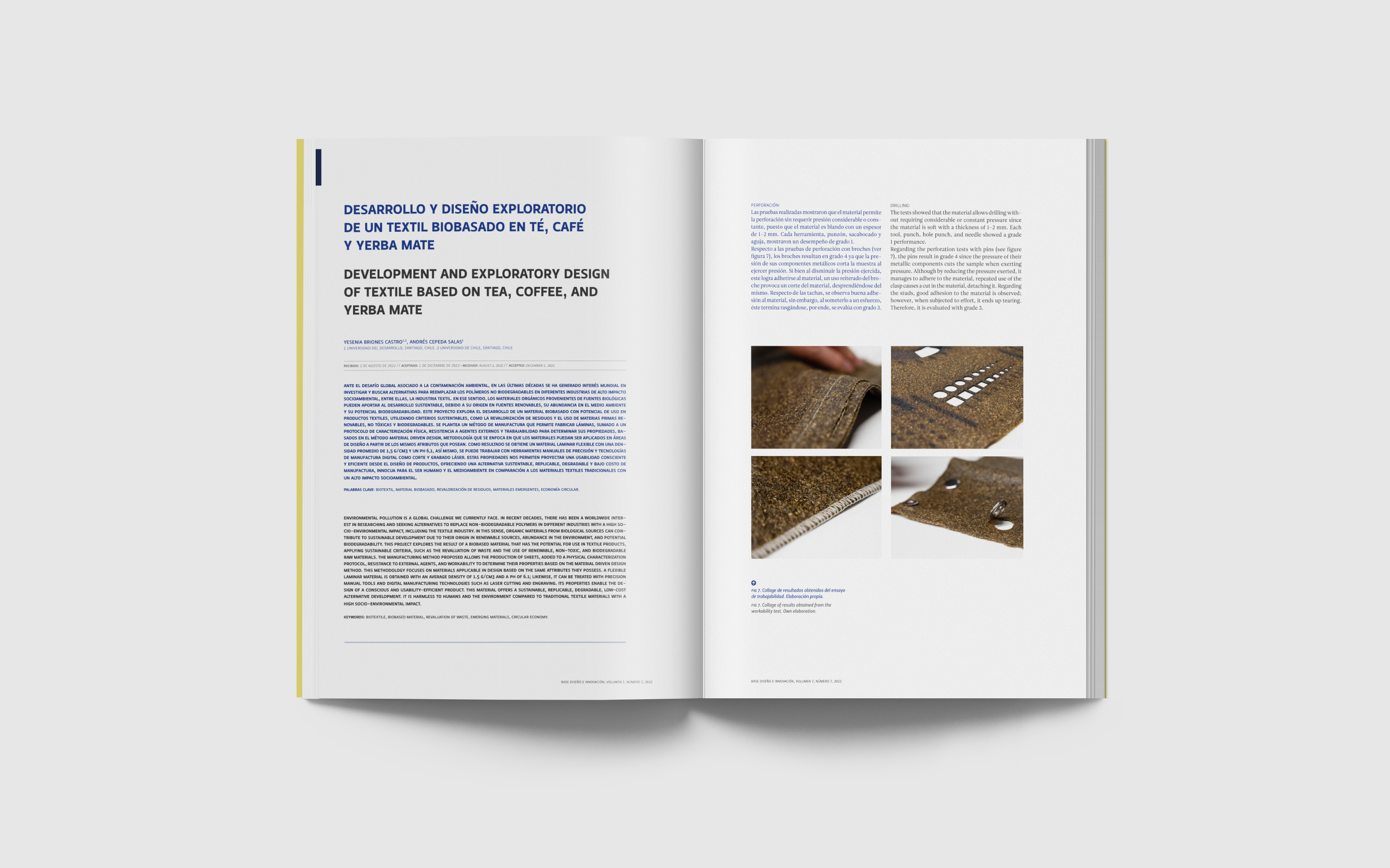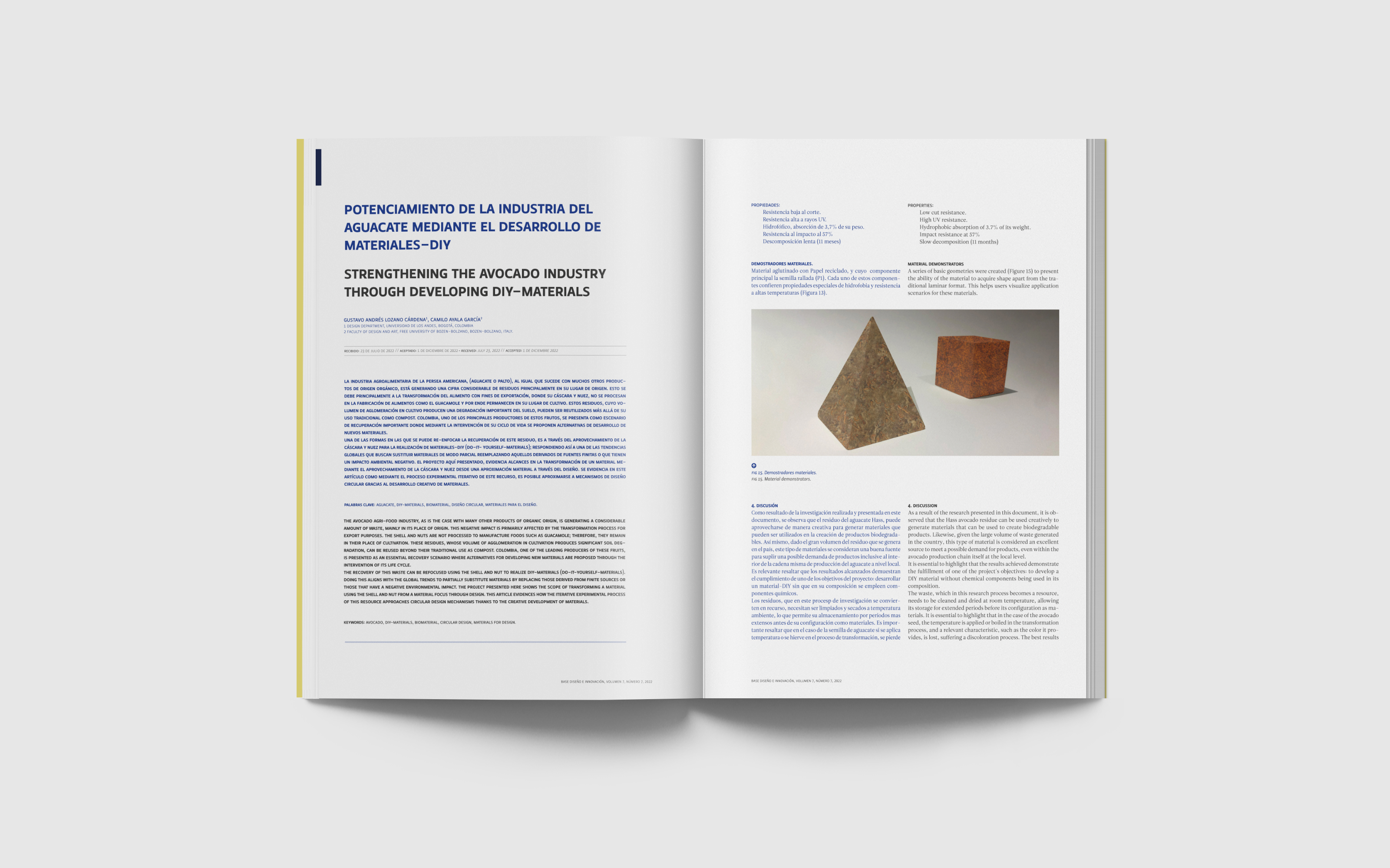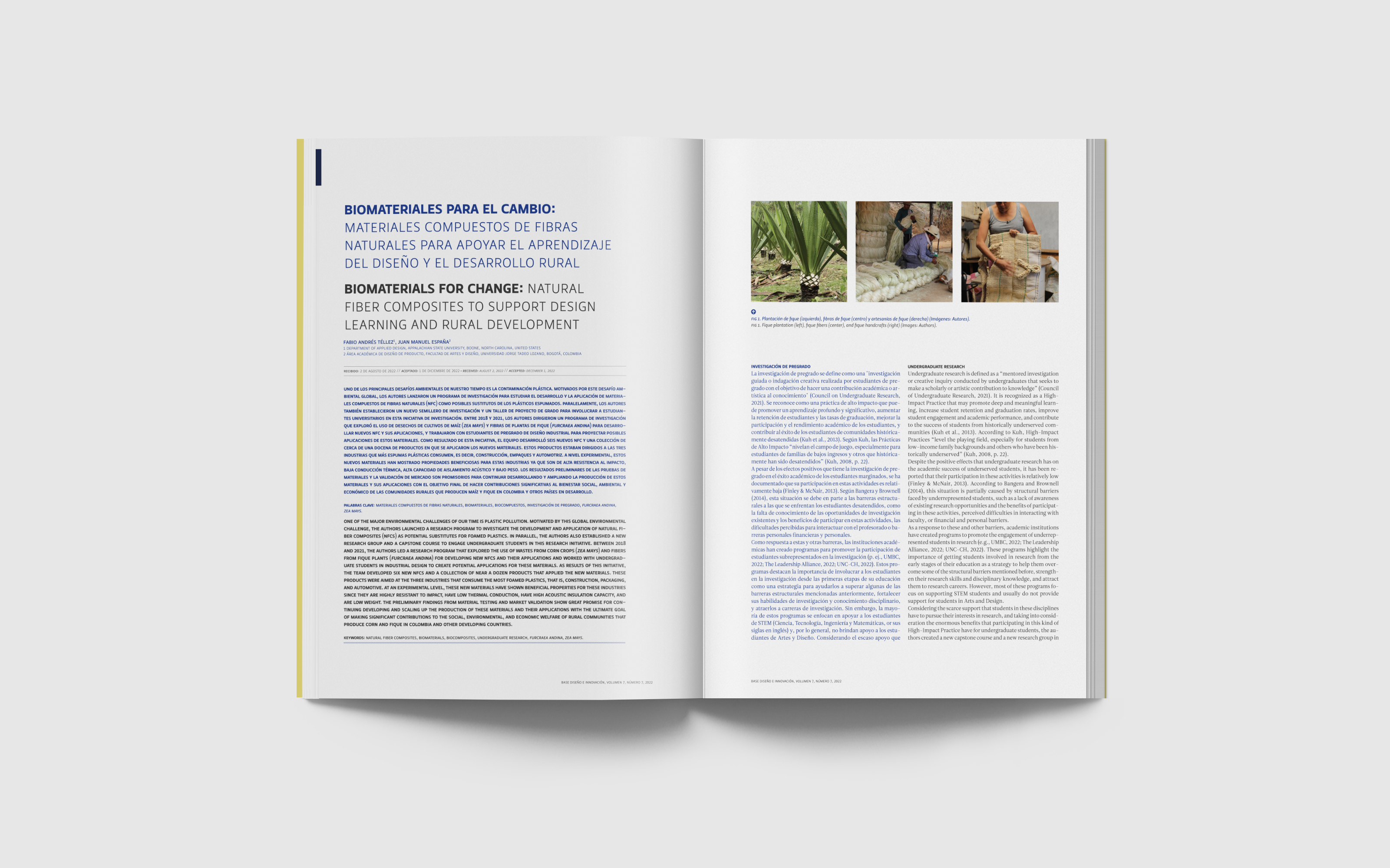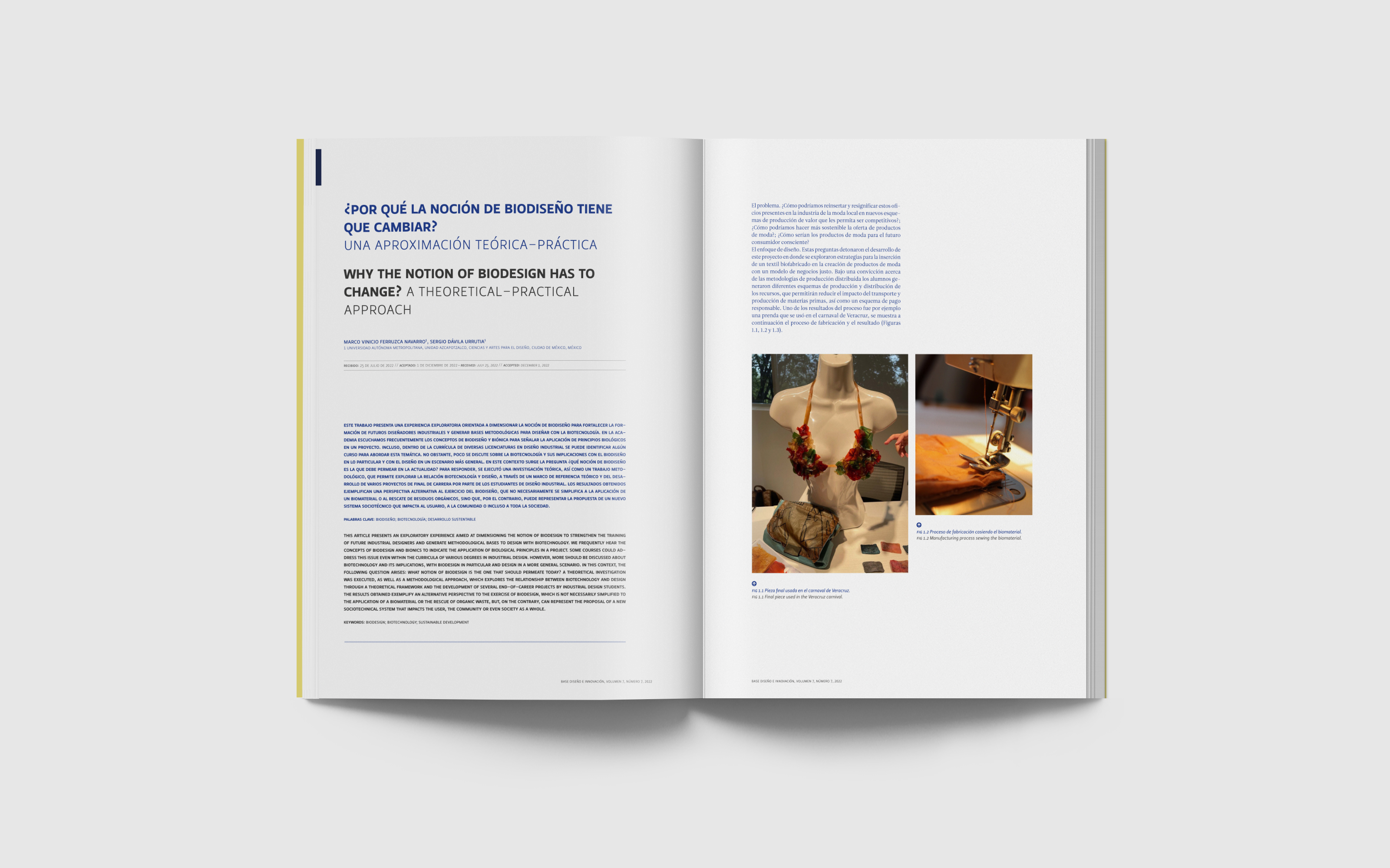Humanity is experiencing a profound multidimensional change. The ecological crisis, the post-pandemic crisis caused by COVID-19, and the new political conflicts contribute to the increase in the price and availability of traditional materials. Consequently, the demand for materials with a sustainable approach proliferates and motivates the development of new ways of thinking and doing in design. The design of emerging materials was born with the idea of mitigating or eliminating environmental damage, integrating aspects of circular design, biological degradation in the life cycle, and a minimal ecological footprint, providing an opportunity to replace traditional polluting materials. In addition, they offer users the chance to achieve new experiences. In this scenario, alternatives such as bio-design or bioinspired design emerge as a new practice that intertwines biology, engineering and design. Complementarily, self-production, the increasing democratization of advanced technologies, and bio-manufacturing have inspired design communities worldwide, tackling technical and methodological challenges to develop emerging consumer materials. The various solutions to technical, emotional, and application requirements lead to new user experiences, in addition to presenting environmental, social, and economic advantages. This special issue entitled "Emerging materials and [bio-design]," brings together ten manuscripts show research developments and approaches for materials design relevant to the current scenario.
Published: 2022-12-30


